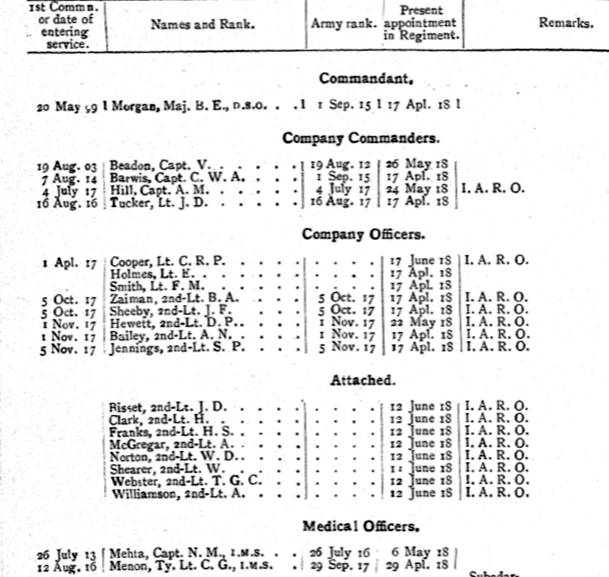This article on the 3rd Battalion 70th Burma Rifles aims to help you research this war-raised Battalion and those served with it. I have written separate articles for the other three Battalions of the Regiment which can be read by clicking on the links below:
I have also written a series of guides to help you research a soldier who served in the Indian Army during the First World War. The link below will take you to the guides:
The 3rd Battalion 70th Burma Rifles
Lineage: The 3rd Battalion 70th Burma Rifles was formed at Meiktila, Burma (Myanmar) on 23 April 1918. The Battalion became the 10th Battalion 20th Burma Rifles in 1922. This was the Regiment’s Training Battalion.
Class Composition of Battalion in July 1918: 4 Companies of Burmans. April 1919: 3 Companies of Burmans and 1 Company of Arakanese. April 1920: 2 Companies of Burmans and 2 Companies of Karens. July 1921: 2 Companies of Burmans, 1 Company of Karens and 1 Company of Shans. January 1922: 4 Companies of Kachins. 1923: Burmans, Karens, Shans, Kachins and Chins.
The 3rd Battalion 70th Burma Rifles was formed at Meiktila, Burma (Myanmar) on 23 April 1918. The Battalion’s first commanding officer was Acting Lieutenant-Colonel Bernard Evan Morgan DSO who was appointed on 17 April 1918 from the 93rd Burma Infantry. The Battalion initially drew its British officers from the Indian Army Reserve of Officers. The Battalion, like the other battalions of the regiment, suffered from the Indian Army’s inability to find British officers who could speak the language of its soldiers. The extract below was taken from the July 1918 Indian Army List and recorded the British officers serving with the Battalion. Only two were pre-war regulars which is typical of the composition of a war-raised Indian infantry battalion.

Marching powers: Progress satisfactory, the Burman is not naturally a good marcher.
Accounts: Were in a hopeless state of chaos whilst in Burma, and difficulties will remain until the Military Accounts Department give the unit a clean start. A line has been drawn through all accounts prior to 1st October 1918 and a fresh start made.
General Observations: The Burman is not by nature a good shot or a good marcher – he dislikes sustained effort, but the steady pressure of discipline is working wonders. In quickness, intelligence and athletic work the Burman excels. General progress very satisfactory. Too much venereal as in all Burman units. Improvement being made.
Confidential review reports on Indian Army units, depots, British officers, etc. for 1918-1919: IOR/L/MIL/7/17030
I haven’t been able to find a lot of information about this Battalion but it helped to suppress the Moplah Rebellion in Southern India in 1921. Officers and men who took part in the suppression of the Moplah Rebellion were entitled to the Indian General Service Medal (1908-35) with clasp Malabar 1921-22. In 1922, the Battalion was redesignated as the 10th Battalion 20th Burma Rifles which was the Regiment’s training battalion.
War Diaries of the 3rd Battalion 70th Burma Rifles
Unfortunately, there are no war diaries for the 3rd Battalion 70th Burma Rifles.
Further Sources for the 3rd Battalion 70th Burma Rifles
For information regarding the British and Indian officers who served with the 3rd Battalion 70th Burma Rifles the Indian Army List should be consulted. The Confidential Reports for the Battalion are held at the British Library, though of the three available two are of the Depot only: Confidential Reports on Regiments etc. These reports also contain the annual reports of the British officers serving with the Battalion, though only those officers serving with its Depot were reported on. There is also a book about the Moplah Rebellion in which the Battalion fought by Diwan Nair which can be downloaded here: The Moplah Rebellion.
